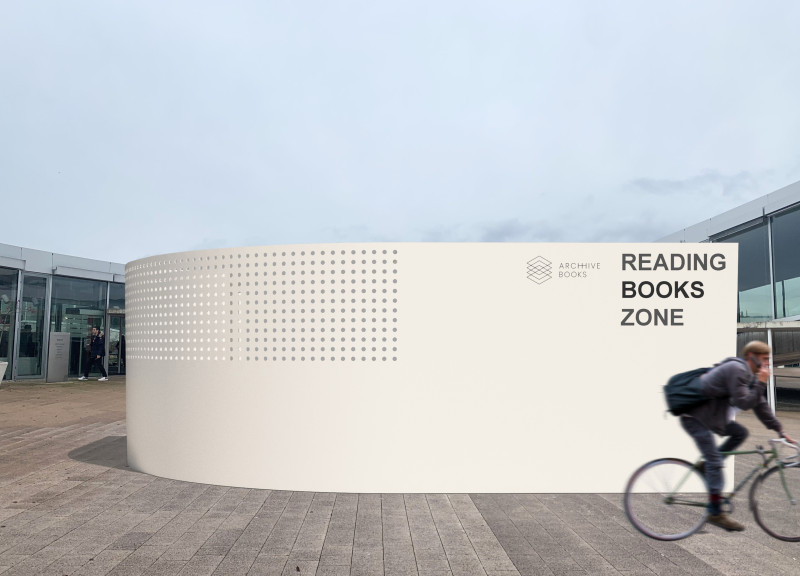5 key facts about this project
The EPFL Portable Reading Room is an architectural project strategically located at the Rolex Learning Center of the École Polytechnique Fédérale de Lausanne (EPFL) in Switzerland. Designed as a functional space, it promotes reading and knowledge exchange among students. The reading room's form is driven by the need for a modular and adaptable environment that supports academic activities.
This project is specifically conceived to cater to the varying requirements of students who utilize the facilities at EPFL. It combines three distinct modules: a bike parking area, a book exchange section, and a designated reading space. Each component serves a clear purpose, contributing to an integrated environment that encourages studying, interacting, and resource sharing.
The architecture emphasizes sustainable design through its use of Krion, a solid surface material. Known for its durability and low maintenance requirements, Krion enhances the overall functionality of the reading room. The structure’s modularity allows for easy transportation and reconfiguration, facilitating diverse setups depending on user needs and events.
Unique Design Approaches
One of the most distinguishing aspects of the EPFL Portable Reading Room is its modular design. The ability to combine two units to create a larger space sets it apart from conventional reading rooms, providing versatility for various academic functions and communal gatherings. This flexibility in design highlights a tailored approach to space utilization, addressing the dynamic needs of students.
Additionally, the integration of bicycle parking directly into the architecture reflects an awareness of sustainable transport methods favored by the student body. This design choice not only enhances the functionality of the space but also aligns with contemporary values focused on ecological responsibility.
Material selection is another unique aspect of this project. Krion's properties—such as its strength, ease of maintenance, and aesthetic appeal—underscore the architects’ commitment to creating a sustainable, long-lasting environment. The non-porous nature of Krion further ensures that the reading environment remains hygienic and visually appealing over time.
Modular Structuring and Prefabrication
The architectural design employs prefabrication techniques, allowing for streamlined construction processes and efficient implementation. The skeletal framework made of metal profiles ensures structural integrity, while the seamless joining of Krion panels creates a visually cohesive exterior. This approach not only simplifies assembly but also promotes adaptability, as the reading room can be relocated without compromising its functionality or aesthetic.
In summary, the EPFL Portable Reading Room represents an intersection of sustainability, functionality, and modular design. The project effectively addresses various academic needs while promoting a culture of reading and resource sharing. For those interested in delving deeper into the project, exploring architectural plans, sections, and designs will provide valuable insights into the architectural ideas that shaped this remarkable educational resource.


























